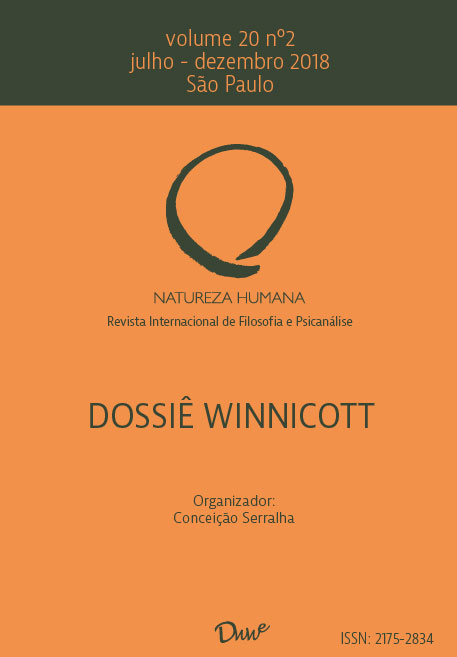Some considerations about the question of transference and countertransference in the clinic of suicide
DOI:
https://doi.org/10.59539/2175-2834-v20n2-335Keywords:
suicide; psychoanalysis; psychoanalytic clinic; transference; countertransference.Abstract
Nowadays there is enough knowledge about the fact that Winnicott’s theory of maturation has expanded the possibilities of clinical practice far beyond the limits intrinsic to the technique derived from traditional psychoanalysis. Among many other contributions, psychoanalysis found in this theory essential, theoretical and technical elements, so that it could present greater effectiveness in the treatment of suicidal patients. On the other hand, this effectiveness has a cost that is also charged to us in the form of the requirement for us to reexamine issues related to transference and countertransference. The objective of this work is to examine the questions related to these two concepts regarding clinical practice among patients with suicidal tendencies. The assumption is that such patients invariably have primitive integration failures, which will require regression in the transference and the consequent intense work of the analyst with the countertransferential elements.References
Fulgencio, L. Aspectos gerais da redescrição winnicottiana dos conceitos fundamentais da psicanálise freudiana, in: Psicologia USP. São Paulo, janeiro/março, 2010, 21(1), 99-125.
Loparic, Z. De Freud a Winnicott: aspectos de uma mudança paradigmática. São Paulo, Winnicott E-Print s, Vol. 5, n. 1, 2006, pp. 1-29.
Winnicott, D. W. (1988) Natureza Humana. Rio de Janeiro, Imago, 1988 (Trabalho original publicado em 1988).
Winnicott, D. W. (1994) A importância do Setting no Encontro com a Regressão na Psicanálise. In: D. Winnicott (1994/1989a), Explorações Psicanalíticas. Porto Alegre, Artmed. (trabalho originalmente publicado em 1964)
Winnicott, D. W. (2000) Formas Clínicas de Transferência. In D. Winnicott (2000/1958a), Da Pediatria à Psicanálise: obras escolhidas. Rio de Janeiro, Imago, 2000. (Trabalho original publicado em 1956a[1955])








